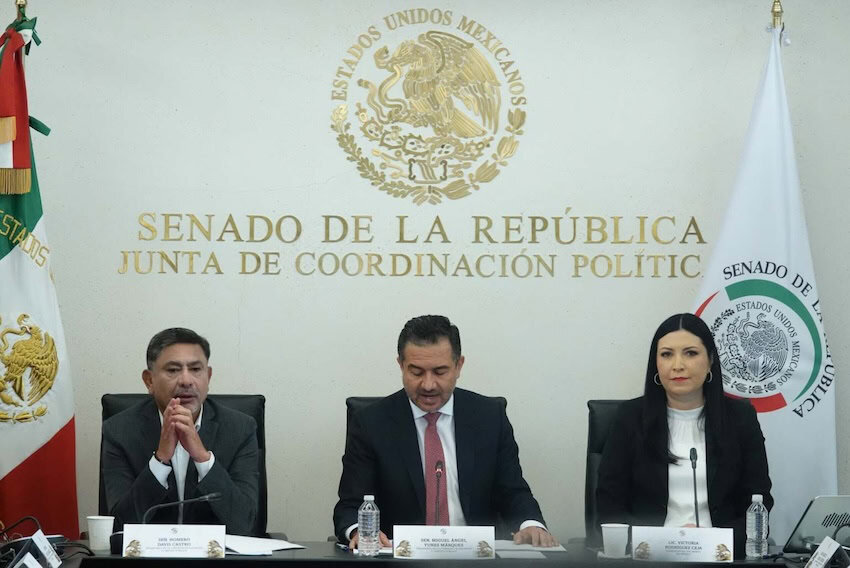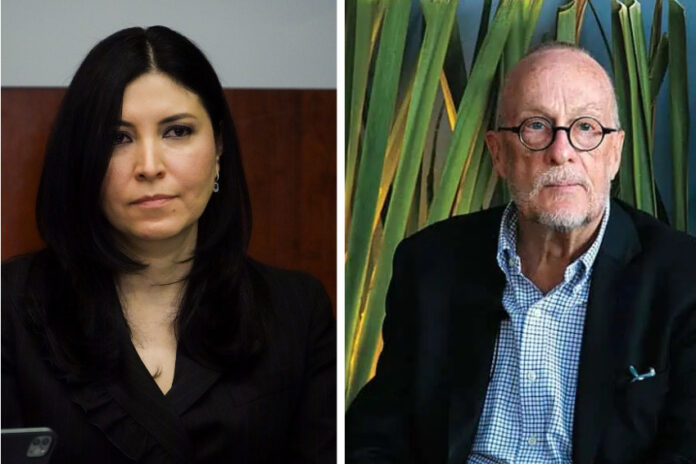The one-two punch of rising inflation and stagnant growth have weakened confidence in Mexico’s economy, but the Bank of Mexico (Banxico) supplied some positive spin in its biannual stability report, suggesting it will continue to lower interest rates.
However, consensus on that strategy may be hard to reach, as prominent central bank Deputy Governor Jonathan Heath suggested that it may be time to “pause” the rate cuts.

Either way, Banxico Governor Victoria Rodríguez sought to assuage fears about Mexico’s banking system and its economy on Wednesday, pointing to the optimistic outlook in the report, while insisting Mexico “has a solid macroeconomic framework.”
The report says Mexico’s financial system has shown “resilience” despite lingering trade tensions with the U.S. and a global context characterized by an economic slowdown.
Banxcio insists the nation’s banking system “maintains solid liquidity with capital levels above regulatory minimums,” according to Reuters, and stress tests indicate it can withstand simulated adverse scenarios, the report says.
Even so, Banxico faces a difficult balancing act: It must ease rising inflation while stimulating the sluggish economy.
The challenge is made more formidable by concerns of long-term high inflation, especially as headline inflation rose to 4.42% in May, well above the 3% target. The concerns are partially fueled by Banxico’s own forecast that inflation won’t converge on the target until the third quarter of 2026.
Talking to reporters on Wednesday, Rodríguez insisted it would be “premature” to conclude that Mexico will slip into a period of high inflation. She pointed to a steady downward trajectory from the highs reached in 2022, when it peaked at 8.7%.
Still, core inflation — excluding volatile items like food and oil — hit 4.06% in May, its highest level in nearly a year.
Although Rodriguez said Banxico will probably continue easing its monetary policy, the decision is not likely to be unanimous.
Heath said on Tuesday that the spike in inflation requires a cautious stance.
“This might be the moment to pause and study the inflation data,” he said, referring to Banxico’s three consecutive 50 basis-point cuts to its benchmark interest rate.
Heath did clarify that his posture reflected a more aggressive approach to reducing inflation by the third quarter this year as opposed to Rodríguez’s preference for gradual easing. He also acknowledged that the situation could evolve depending on changes in the global economy or with regard to U.S. trade policy.
A Reuters survey indicated that Banxico is expected to implement a fourth consecutive 50-point rate cut at its next meeting on June 26.
Analysts cited by El Economista noted that the rise in merchandise prices could continue to offset the decline in prices of services, preventing core inflation from continuing to decline. However, they expect Banxico to bet that services prices will begin to fall due to cyclical conditions and, as a result, to continue their monetary easing later this month.
With reports from Reuters and El Economista
